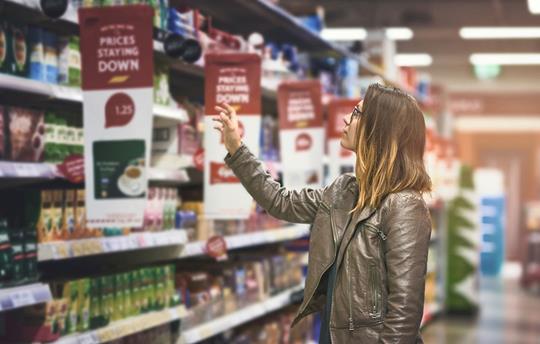3 Challenges Growing Retailers Face Across Their Location Footprint
9/29/2022 Jay Schumacher & Dave Huang

A significant challenge that growing retailers face is having a complete understanding of the elements, fixtures, and overall current state across their location footprint.
There can be a variety of reasons for this: acquisitions, evolving store layouts, locally changing fixtures, inconsistencies and variations in fixtures and spaces, and rapid store expansion (without the means to adapt).
This can also be a result of previous store profiles and surveys not taking into account the perspective of rapidly emerging trends in retail. Consider:
- An expanding convenience store (C-Store) chain may have unknown pump layouts and counts, various floor plans in the stores, and different window and door configurations.
- A quick service restaurant (QSR) may not have clear details on the differences of drive thru lanes and fixtures, parking lot layouts, window and door configurations, and interior floor plans.
- A general retailer may not have critical information on store and department configurations, available marketing space, checkout areas, available floor display areas, and existing wayfinding signage and positions.
These variations by location can create a number of challenges for marketing and merchandising teams.
1. Retail without specific data points is difficult
Without specific data points, building brand consistency, engaging experiences, and a designed consumer path is extremely difficult. Here are three scenarios reliant on sound data for successful execution:
As a C-Store: welcoming consumers to come into the store, improving product visibility and findability in smaller footprints or creating window displays that excite and stand out, while still allowing for visibility, both inside and outside
As a QSR: building loyalty and attracting new customers in an increasingly competitive landscape, rethinking traditional restaurant formats to reach broader customer base, ensuring consistency and execution across promotions and menus both in-restaurant and in drive thru, seamless ordering and pickup experience through multi-channel interfaces
As a general retailer: establishing clear visibility across wayfinding signage and product displays in order to get consumers directly to their product, and which creates time to browse that eventually increases items in their baskets
For all three of these store types, additional difficulties include:
- Designing localization strategies to create engagement
- Implementing wayfinding layouts to maximize product visibility and consumer path-to-purchase
- Identifying marketing opportunities outside of your in-store space with branded delivery vehicles
2. Adapting a store footprint to address trends can be problematic
Evaluating how your store footprint can adapt to weave-in strategies for addressing emerging and growing trends is highly problematic. Organizations should consider how you can execute strategies, such as:
- Manufacture more permanent curbside and buy online, pick-up in store (BOPIS) solutions that are seamlessly integrated with the footprint and provide an exceptional experience.
- Provide micro-fulfillment to achieve the short delivery times expected by consumers — and minimize the advantages of a major retailer, e.g., Amazon or Walmart.
- Available spaces and layouts to support store-within-a-store or pop-up configurations
- Touchless/Contactless engagement enablers like proximity mobile payment and virtual store assistant solutions
3. Lack of documented store details a cause for impossible installation
A lack of documented store element details can lead to unsuccessful or even impossible installation. When store associations or installers attempt to set up new signage and displays, the amount of variation in fixtures, sizing, and positions can mean:
- Needing the ability to adapt onsite, on-the-fly
- Capturing the variations for improving future rollouts
- Inconsistent messaging causing a confusing customer journey
- Understanding additional marketing opportunities to maximize in-store space
The absence of strong data and the capability to update and add detail will result in significant inconsistencies in signage, displays, and overall consumer experiences from location to location.
Case study: End-to-end program management solution relieves frustration,
fuels consistency for national chain of highway stopping centers
Onsite marketing service as the solution — an explanation
To help confront and solve these challenges, onsite marketing must be a top priority. This can help retailers effectively plan out and execute store surveys, convert surveys into meaningful store profiles, and help develop the right signage and display strategies across their store fleet.
If onsite marketing has been a liability for your brand, find an in-store marketing partner who can champion an end-to-end approach that includes design, production, fulfillment, and signage and display installation. Securing proven support for this entire process will ensure consistency and allow store associates to continue focusing on consumer needs.
As a growing retailer, transforming your strategic vision into reality is increasingly difficult in today's market. The challenges created by unknown or inconsistent store layouts and fixtures will only keep you from accelerating your marketing vision.
Making an investment in a robust surveying and profiling initiative can help unlock the door to differentiating your brand and reimagining in-store environments.
Jay Schumacher is the Vice President of Client Services for RRD Signage and Displays. Dave Huang is the Manager of Program Management Services for RRD Signage and Displays.